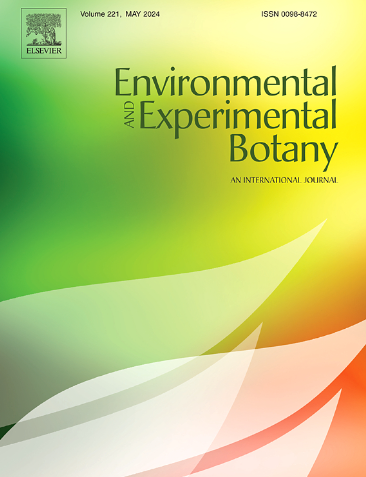银纳米粒子通过抑制拟南芥根尖生长素的极性转运和局部生长素的生物合成,抑制根的生长,促进根的摆动
IF 4.7
2区 生物学
Q2 ENVIRONMENTAL SCIENCES
引用次数: 0
摘要
银纳米颗粒(AgNP)因其抗菌和导电性能而被纳入许多消费品中。尽管AgNP被广泛使用,但其泄漏对环境的影响,特别是对植物生长的影响,仍未得到充分研究。本研究考察了AgNP对根生长的影响。在添加AgNP的垂直琼脂板上生长的拟南芥幼苗呈现出波浪状的根表型,这是由于根尖处生长不对称所致。结果表明,AgNP抑制初生根生长,诱导根波动呈剂量依赖性;在同等浓度银离子(Ag+)处理的幼苗中没有这种效应,表明AgNP的独特影响。利用生长素信号突变体,我们证明了agnp诱导的根波依赖于生长素信号的功能。对生长素报告系的分析表明,AgNP通过干扰生长素的极性运输,破坏了生长素的正常分布,诱导生长素的不对称积累,特别是通过下调根尖的生长素外排和内流载体的表达,但在表皮和皮层中上调的PIN2除外。此外,利用犬尿氨酸抑制TAA1介导的局部生长素生物合成,以及TAA1基因突变,加剧了AgNP处理下的根波表型。总之,这些发现表明AgNP通过干扰生长素的稳态和运输来调节根的生长和摆动,突出了纳米颗粒污染在环境中造成的潜在生态风险。本文章由计算机程序翻译,如有差异,请以英文原文为准。
Silver nanoparticles inhibit root growth and promote root waving by inhibiting polar auxin transport and local auxin biosynthesis in Arabidopsis root tips
Silver nanoparticles (AgNP) are incorporated into numerous consumer products for their antimicrobial and conductive properties. Despite the widespread use, the environmental implications of AgNP leakage, particularly on plant growth, remain underexplored. This study examined the effects of AgNP on root growth. Arabidopsis seedlings grown on vertical agar plates supplemented with AgNP showed a wavy root phenotype, which is caused by asymmetric growth at the root tips. The results showed that AgNP inhibited primary root growth and induced root waving in a dose-dependent manner; such effects were absent in seedlings treated with equivalent concentrations of silver ions (Ag+), indicating the unique impact of AgNP. Using auxin signaling mutants, we demonstrated that AgNP-induced root waving depends on functional auxin signaling. Analysis of auxin reporter lines revealed that AgNP disrupted normal auxin distribution and induce asymmetric auxin accumulation by interfering with polar auxin transport, specifically through downregulation of auxin efflux and influx carrier expression in the root tip —except for PIN2, which was upregulated in the epidermis and cortex. Furthermore, inhibition of TAA1-mediated local auxin biosynthesis using kynurenine, as well as mutation of the TAA1 gene, exacerbated the root waving phenotype under AgNP treatment. Together, these findings reveal that AgNP modulates root growth and waving by interfering with auxin homeostasis and transport, highlighting a potential ecological risk posed by nanoparticle contamination in the environment.
求助全文
通过发布文献求助,成功后即可免费获取论文全文。
去求助
来源期刊

Environmental and Experimental Botany
环境科学-环境科学
CiteScore
9.30
自引率
5.30%
发文量
342
审稿时长
26 days
期刊介绍:
Environmental and Experimental Botany (EEB) publishes research papers on the physical, chemical, biological, molecular mechanisms and processes involved in the responses of plants to their environment.
In addition to research papers, the journal includes review articles. Submission is in agreement with the Editors-in-Chief.
The Journal also publishes special issues which are built by invited guest editors and are related to the main themes of EEB.
The areas covered by the Journal include:
(1) Responses of plants to heavy metals and pollutants
(2) Plant/water interactions (salinity, drought, flooding)
(3) Responses of plants to radiations ranging from UV-B to infrared
(4) Plant/atmosphere relations (ozone, CO2 , temperature)
(5) Global change impacts on plant ecophysiology
(6) Biotic interactions involving environmental factors.
 求助内容:
求助内容: 应助结果提醒方式:
应助结果提醒方式:


